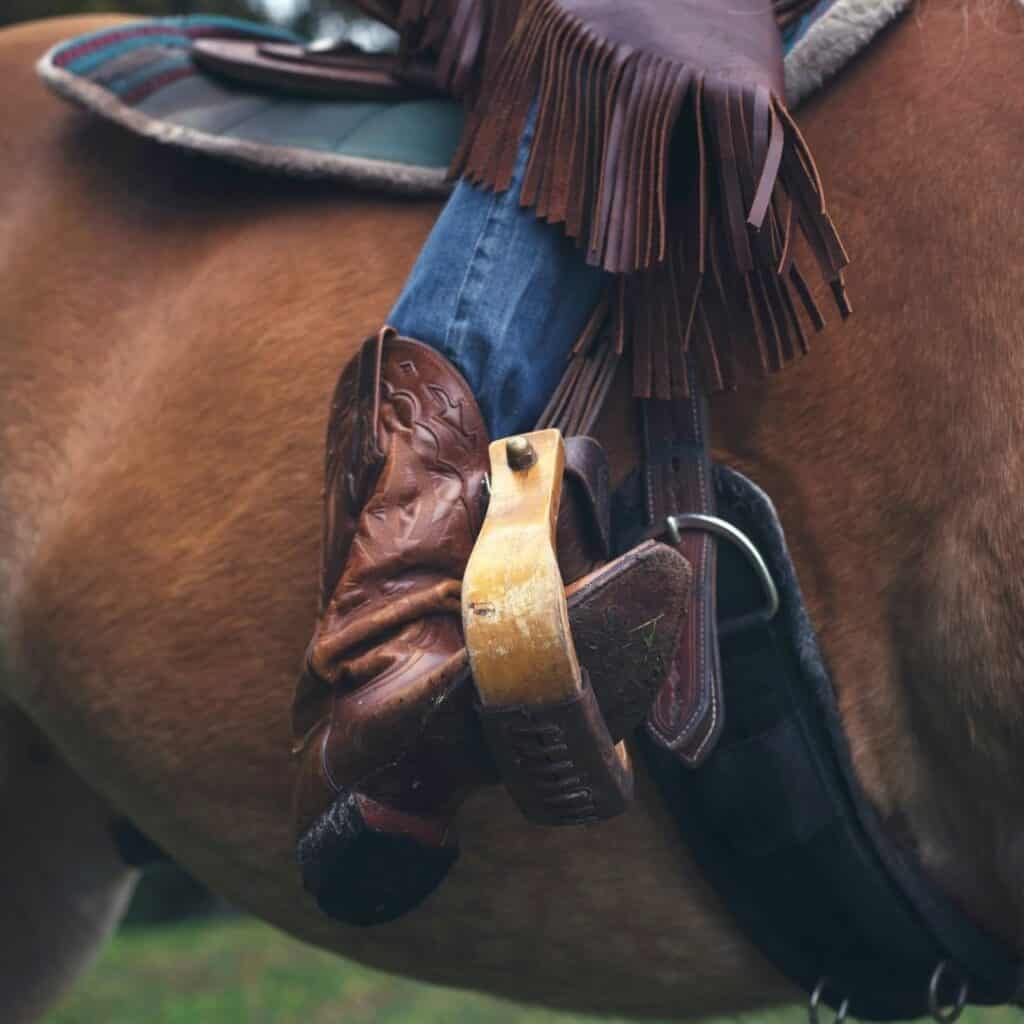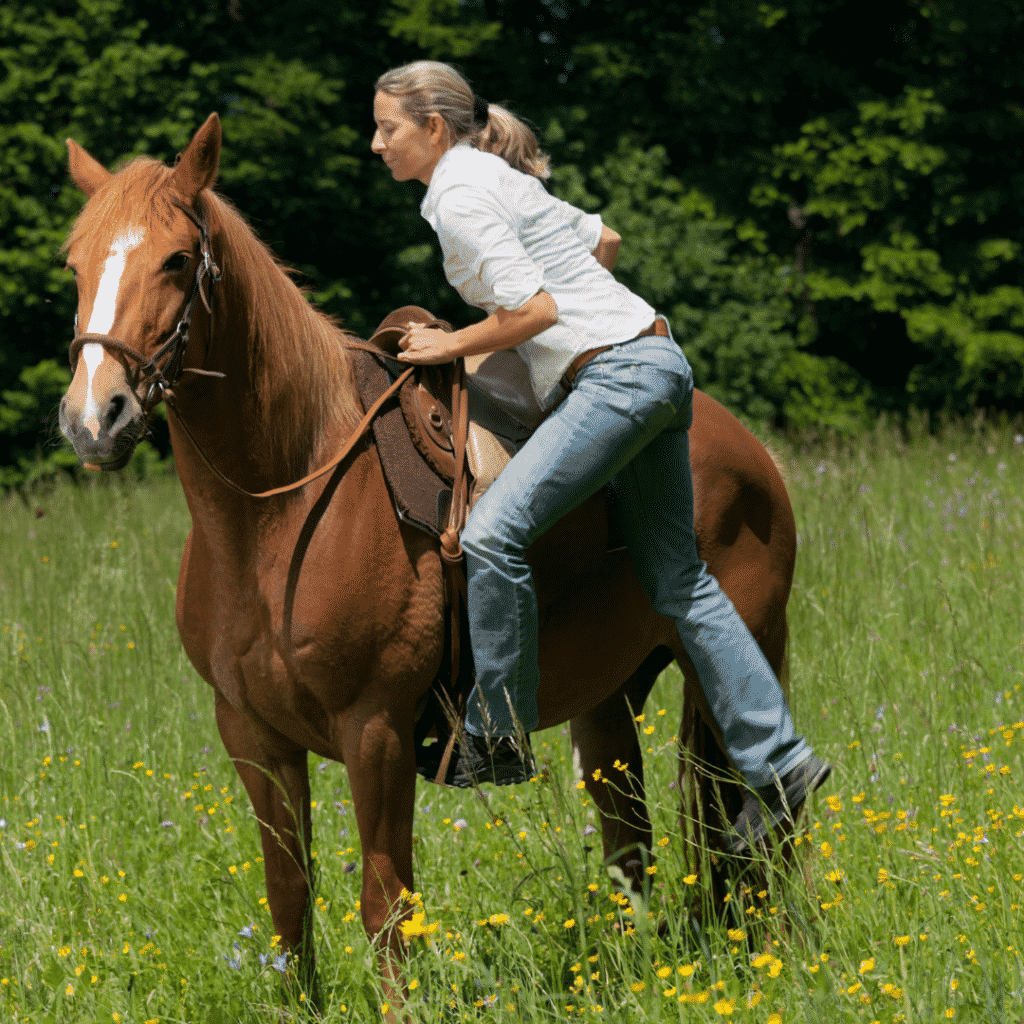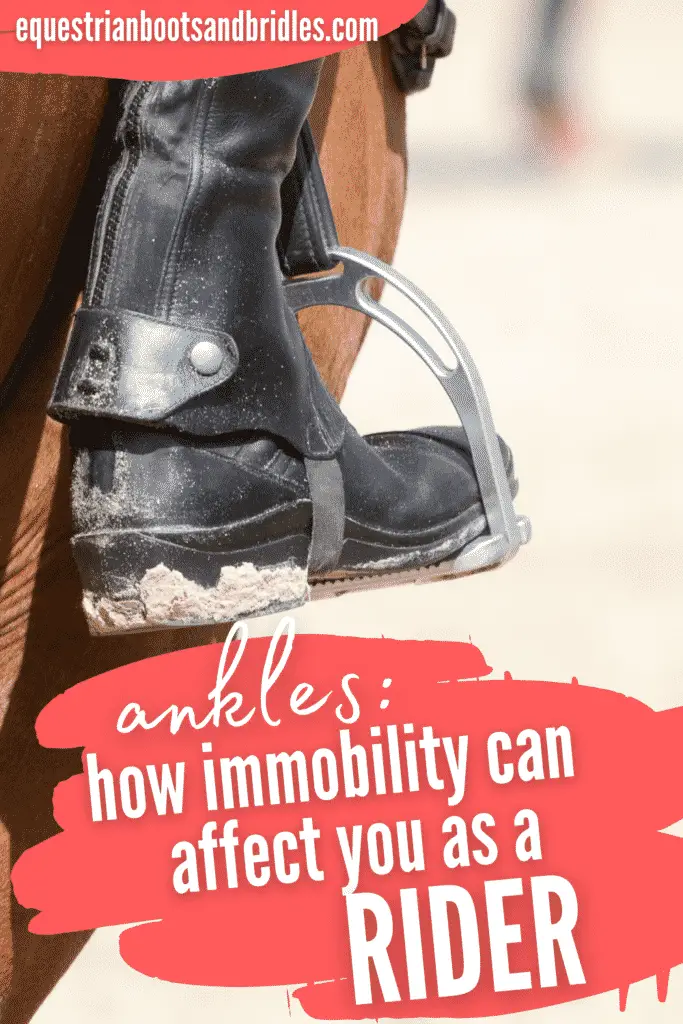In my experience, every horse riding trainer will tell you to “get those heels down!”
But what if you just can’t? Most people don’t think of that.
Below are some English riding tips on ankle mobility that will help you get those heels to where you need them to be.
[UPDATE!] I want to start of by saying that if you’re REALLY struggling with ankle mobility and lower leg position, e-mail me directly as I’m currently working on a complete course on how to go from 0 to excellent ankle mobility and complete lower leg stability when riding. I’ll give you access to a great deal when the course launches (no obligations, of course)!

If you want to be able to keep your heels down properly while you’re riding then you need to have a certain degree of ankle mobility. Without this, it’s going to be very hard for you to keep your heels down consistently. You’ll have issues with your feet coming forward in the stirrup especially during a trot or a canter.
Why do you want to keep your heels down?
The problem with your foot coming forwards is that you’ll lose the level of control you should have in the saddle.
With your weight down into your heels, it gives you a much greater sense of balance and connection with the horse. It also allows you to keep your bum deep in the saddle and match your horse’s rhythm easily.

When your feet come forward, you lose the foothold because your toes start pointing down and you have no more leverage through your legs. Now you’re more likely to lean forward and it will be much easier for you to get thrown off balance.
The issues you’ll face without ankle mobility
In order to push your weight down through your heel and keep the ball of your foot securely on the stirrup, you’ll need to get your heel below parallel.
Parallel just won’t cut it because there simply won’t be enough force to properly get your weight down and get yourself as balanced as possible.
If you haven’t already, try pushing your heels down as far as possible next time you’re on a horse. And feel the pressure on the ball of your foot. This should give you a much greater sense of stability and balance on the horse.

You will be able to feel the horse much better beneath you and gain a huge advantage when it comes to a stable trot, canter and especially when it comes to executing a clean jump.
Of course you also don’t want to go too far down so that your entire body is starting to angle backwards and your legs are starting to straighten. This is not good either! You want to keep your posture inline right overtop of your heels.
Why can’t you keep em’ down?
If you can’t consistently keep your heel down then you’re probably doing one of two things:
The first of is you’re not paying enough attention… in which case – you have have have to! I can’t stress how important it is to pay attention to this! You really should not be doing a jumping course, especially an intensive one, or any sort of cantering/loping routine even if you can’t keep your heels down.
The reason is because if your heels aren’t down then you’re going to bounce more in the saddle because your weight isn’t being pushed down. This leaves your horse free to bounce you around. You will loose the ability to control your body.
If your legs are very strong or you are very in tune with your horse then you may be able to get away with this. But if your horse does one thing you don’t expect or if there’s a tighter turn than you anticipated then there’s a much greater chance you’re off of there.

The second is that you have stiff ankles… This could be due to many different things. Some of the top culprits of this are ballet and tennis. Ballet dancers and tennis players spend an awful lot of time on their toes (especially ballerinas!) which means terrible dorsiflexion.
Dorsiflexion is the ability to bend your ankle such that your knee is going directly over it. The further your knee goes, the better you will be at keeping those heels down!
How is your ankle mobility?
First, you’re going to need to verify that dorsiflexion is in fact the problem. Even if you’re pretty sure that it is, you’re not going to want to skip this step because it’s a good way to keep track of your future progress towards more ankle mobility. So first things first: go get a tape measure!
You can measure your degree of dorsiflexion by standing in front of a wall so that you are facing it. Then put your foot at a distance from which you can just touch your knee to the wall without raising your heel. Once you’re at the furthest distance possible at which your knee is touching the wall and your heel is on the ground, measure the distance between your big toe and the wall. Voila! That is your starting point!
Here’s a video of the test! Here he’s talking about running but the test is universal.
Track your progress
If your numbers are 5 cm or below than you’ve definitely found your answer to why you can’t keep those heels down! If your numbers are between 5 – 10 cm then you’ve got some stiffness and if you’re over 10 cm you should be good to go! You just need some more focus on that particular issue in the saddle.
If you do have stiff ankles, don’t worry at all! I’m going to tell you how you can fix this issue so that you’re riding better than ever. Click here for the best exercises for ankle mobility. I’ll even give you a back up plan for what to do if those aren’t working!
I hope this gave you some insight on why it’s important to keep those heels down and maybe even why it’s been tough for you to keep them down! Please comment below if you have any questions about ankle mobility, and I’ll get back to you.
If you’re REALLY struggling with ankle mobility and lower leg position, e-mail me directly as I’m currently working on a complete course on how to go from 0 to excellent ankle mobility and complete lower leg stability when riding. I’ll give you access to a great deal when the course launches (no obligations, of course)!
Happy riding 🙂
Liked this post? Why not pin it!



This is a great read for those that are into horse riding and given the fact that it is Olympic Games season many will be watching the equestrian, especially the younger generations thinking that they would like to compete one day.
I didn’t know that you need to keep your heels down when riding a horse but after reading what you have said it makes a lot of sense to keep that control over the horse.
Hi Ben!
Thank you for your positive feedback – inspiring the younger generation is really what it’s all about. I’m so flattered you think that this post might help do that